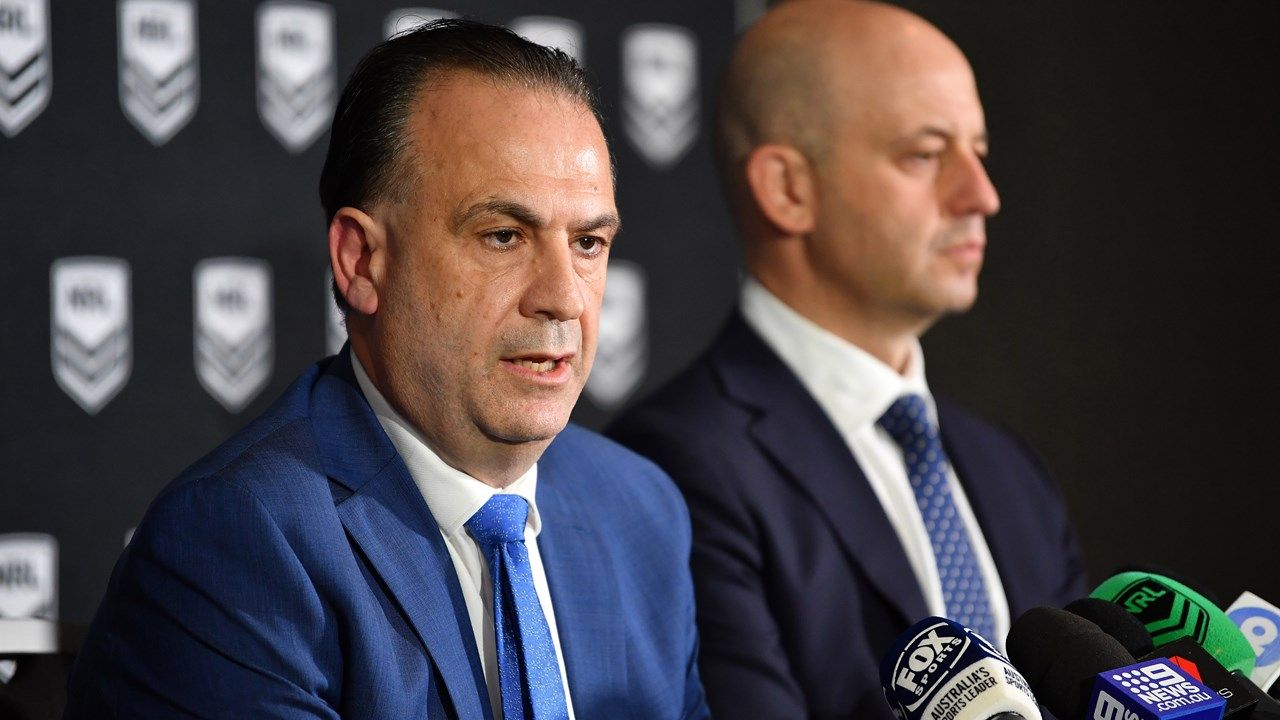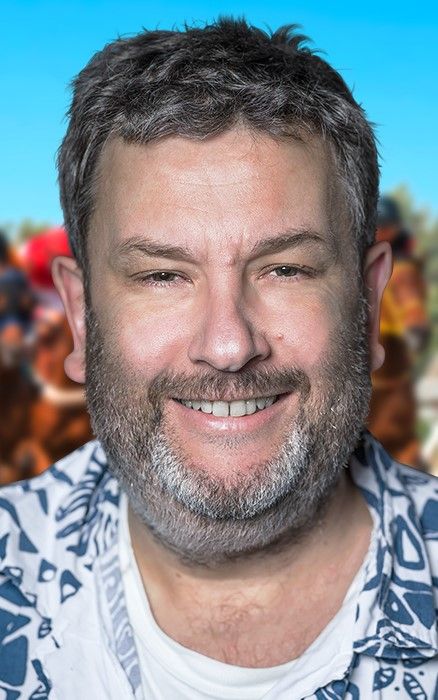By the time you read this the full-time whistle should have sounded in the match between the Brisbane Broncos and Parramatta Eels at Brisbane’s Lang Park.
It’s only a round three game in what is normally a 29-round season but it represents the restart of team sports in Australia, and the restart of team contact sport anywhere in the world. [For the sake of clarity, we’re not counting football as a contact sport.]
That rugby league is even playing today and across this weekend appears to be a huge win for the game’s charismatic chairman Peter V’landys [who also serves as the CEO of NSW Racing]. V’landys’ no-nonsense determination to get things going again has earned him the nickname ‘Push Ahead Pete’.
When V’landys announced May 28 as the target date, all the way back in the first week of April in the depth of the Live Event lockdown, many people scoffed. Those who weren’t scoffing were outraged.
Yet here we are. And rugby league will also be delighted to have pipped their rival code the AFL’s Aussie Rules, whose matches don’t kick off again until June 11.
The almost ten weeks since the National Rugby League was forced to suspend competition after Round 2 have been some of the most extraordinary and turbulent in the game’s history:
- the NRL lost their CEO in a boardroom wrestle with chairman V’landys [V’landys, left in our main picture, with the CEO who was forced out, Todd Greenberg];
- long-term broadcast partnerships had to be renegotiated with much brinkmanship and name-calling;
- there seemed almost daily instances of players not complying with ‘lockdown [often involving alcohol and young female fans],
- players spoke of refusing to be vaccinated, if a coronavirus vaccination was developed [led in part by their angry Wives and Girlfriends] and
- there was potential industrial action by referees.
In this profile of ‘Push Ahead Pete’ by the ABC last month, Australia’s state broadcaster acknowledges V’landys ‘punchy approach promises something the data-driven health department officials and unusually fact-observant politicians can't — a return to the daily routine for those fans whose lives are guided by rugby league’.
‘[V’landys] has created a bull market for his early start-up plans by sheer force of personality and despite the misgivings of those he blithely dismisses as naysayers and procrastinators.
‘In a world where our daily lives are guided by the cautious words of health official bureaucrats quoting data provided by lab-coated geeks, V'landys's colourful rhetoric has played well with those accustomed to rugby league's aggressive nature and others craving for a distraction from the drab reality of shutdown life.’
Here are some of the key issues that the NRL have had to confront because of the circumstances of the coronavirus lockdown and the changes made to the game as a result:
- As an initial cost-cutting move the game will be adjudicated by a single referee for the first time since 2008;
- the NRL rule book will allow the awarding of six additional tackles for ruck infringements. Although this was tried back in 2012, the experiment was shelved so the new law is basically untested. It remains to be seen how the rule will be enforced, if it opens up attacking opportunities and to what extend may wear down defending sides, especially in the closing stages of a game.
- Lots of questions over player fitness which means lots of anxious medical teams waiting to see what impact the start-stop-start season will bring. Historically teams have trained together but after the suspension of the season all players were moved to virtual and isolated sessions. Players have only been able to tackle each other in training in the past fortnight.
- The lower grade competition (named the NSW Cup) was cancelled for this season. In order to work around the potential losses from injury, clubs can now draw on an expanded 30-player squad from their lower grade ranks. But whether those in the lower grade can make an easy transition into the elite competition is, frankly, unknown.
- Each club will now face at least 18 consecutive rounds of play with no byes or split rounds to help with mid-season injury recovery.
- Each of Australia’s states operate their own health protocols including cross-border travel restrictions. This means that teams from out of state have to fly in on game day and then fly out after the match’s completion.
The NRL is a sixteen-team club competition with eight clubs based within Greater Sydney, two in regional New South Wales, three in Queensland and one each in Victoria, the Australian Capital Territory and New Zealand.
Here is the NRL’s helpful team-by-team analysis of what the rest of the season has to offer.
Of all of the changes the NRL has had to make, the most controversial but also the most necessary has been collapsing the almost 20 stadia down to just six for the matches between now and round nine.
- Those six venues are: the Western Sydney Stadium in Parramatta, Campbelltown Stadium in Sydney's west, Central Coast Stadium in Gosford, NSW, Brisbane's Lang Park, North Queensland Stadium in Townsville and Melbourne's AAMI Park.
- Of the eight teams with the best at-home winning percentage over the past five years, Melbourne, Brisbane and Parramatta will play their games at home – a considerable advantage, hence the controversy.
- Week one of the finals will now be played from October 2 to 4, before the semi-finals (October 9-10) and preliminary finals (October 16-17) take place ahead of the ‘big dance’ on October 25
- State of Origin matches have been rescheduled to Wednesday, November 4, before Origin II and III are played on November 11 and 18 respectively, and the women's State of Origin on November 13.
A review of venues will be conducted by the end of round nine to determine the staging of the next rounds of matches.
Although the competition will start tonight with no fans in attendance, the NRL – with Push Ahead Pete to the fore - would like to see fans back in venues for matches by July 1. In lieu of fans, the NRL is also promoting a similar concept to that introduced by Borrusia Munchengladbach which allows supporters to buy their place in the stadium in the form of a life-sized cardboard figure. The cost is AU$ 22 pp plus GST.
While the NRL embarks on its next mission – to have spectators return by 1 July – the home advantage of once-feared fortresses like Melbourne will be examined in a new light, given the absence of cheering home fans.
There is no doubt the team with the least advantages under the new arrangements: the one team from outside Australia. To comply with international quarantine rules, the New Zealand Warriors left their families behind on May 2 to set up camp in the New South Wales country town of Tamworth.
They’ve now moved closer to their assigned home ground in the Central Coast last week but still with no prospect of seeing their family and loved ones.


